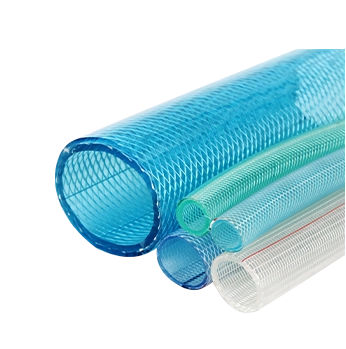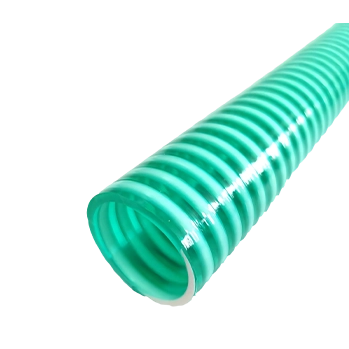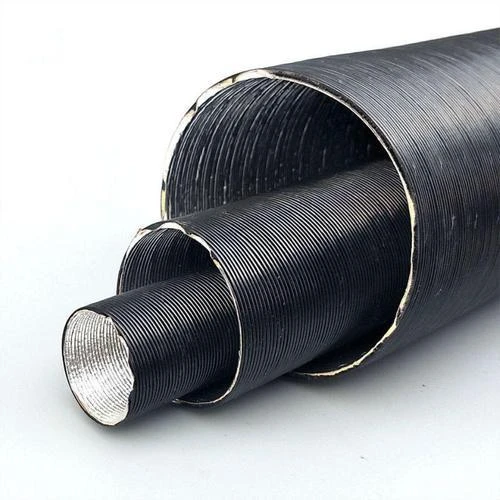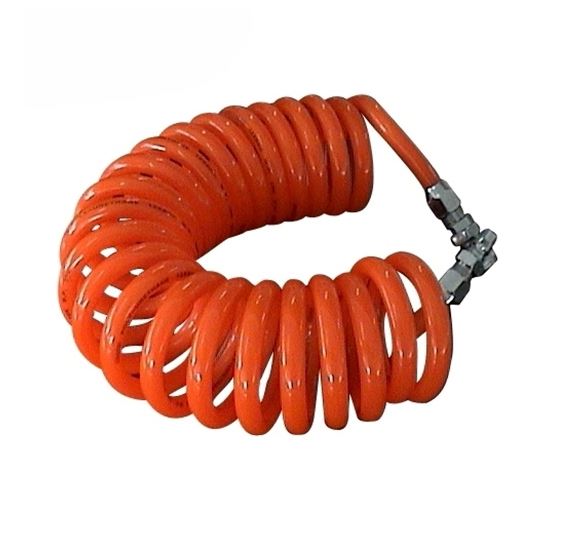High-Performance Flexible Duct Hose | Vacuum & Ducting Solutions
The Indispensable Role of Advanced Flexible Duct Hoses in Modern Industry
In the demanding landscape of modern industrial operations, the efficient and safe transfer of air, gases, fumes, and various materials is paramount. This critical function often relies on the performance of specialized ducting solutions, among which the flexible duct hose stands out as a versatile and essential component. From ventilation systems in confined spaces to material handling in abrasive environments, these hoses are engineered to meet stringent requirements for durability, temperature resistance, chemical inertness, and flexibility. Their design allows for easy installation in complex configurations, absorption of vibrations, and adaptation to dynamic operational needs, making them indispensable across a spectrum of sectors including chemical processing, automotive manufacturing, aerospace, woodworking, and pharmaceuticals. As industries evolve and demand higher standards for operational efficiency, safety, and environmental compliance, the technology behind flexible duct hoses continues to advance, offering solutions that cater to ever more specific and challenging applications. This article delves into the intricate world of advanced ducting solutions, specifically highlighting the SILICONE COATED GLASS FIBER DUCT, exploring its technical prowess, manufacturing excellence, diverse applications, and the competitive advantages it offers to B2B decision-makers. Understanding these facets is key to optimizing industrial processes and ensuring long-term operational integrity.
Industry Trends and Evolving Demands for Ducting Solutions
The industrial sector is currently experiencing a significant shift towards more specialized and high-performance ducting solutions, driven by increasingly stringent environmental regulations, a heightened focus on worker safety, and the continuous pursuit of operational efficiency. Traditional metal or rigid PVC ducting, while robust for certain applications, often falls short in scenarios requiring extreme temperature tolerance, chemical resistance, or dynamic flexibility. This has led to a surge in demand for advanced materials and designs in the realm of flexible duct hose technology. Key trends include the growing adoption of composite materials, such as silicone-coated fiberglass, which offer superior performance characteristics over conventional options. Furthermore, there's an increasing emphasis on hoses with excellent flame retardancy, low smoke generation, and anti-static properties, particularly in hazardous environments. The rise of automation and robotics in manufacturing also necessitates ducting that can withstand constant flexing, vibration, and abrasive wear, pushing manufacturers to innovate. For instance, the demand for effective vacuum ducting in industrial cleaning and material conveyance systems is skyrocketing, requiring hoses that can maintain structural integrity under negative pressure and resist internal abrasion from transported particulates. Similarly, the need for robust ducting hose in high-temperature exhaust and ventilation systems, like those found in metallurgy or automotive paint booths, highlights the critical role of material science in meeting these challenges. As industries strive for cleaner production, higher safety standards, and reduced maintenance downtime, the market for technically superior and customized flexible ducting solutions is expanding rapidly, demanding products that offer enhanced longevity, reliability, and specific performance attributes tailored to precise operational needs.

Technical Parameters and Performance Insights: SILICONE COATED GLASS FIBER DUCT
The SILICONE COATED GLASS FIBER DUCT is a prime example of an engineered flexible duct hose designed for extreme performance in challenging environments. Its superior properties stem from the synergistic combination of high-strength glass fiber fabric and a specialized silicone coating, reinforced by a spiral steel wire. This construction allows it to withstand temperatures ranging from approximately -60°C to +260°C, with intermittent peaks up to +300°C, making it ideal for high-temperature air handling and fume extraction. Key technical parameters that distinguish this hose include its excellent thermal resistance, which minimizes heat loss or gain, contributing to energy efficiency in heating or cooling applications. Furthermore, its chemical resistance to a wide array of industrial solvents, acids, and alkalis ensures longevity in corrosive atmospheres. The abrasion resistance of the silicone coating, combined with the structural integrity provided by the glass fiber, makes it highly durable against wear from conveyed particles, such as in wood dust collection or light material conveying. Crucially, its high tensile strength and burst pressure ratings ensure reliability under both positive and negative pressure applications, while a remarkably low minimum bending radius allows for tight installations in confined spaces without kinking or compromising airflow. The compliance with international standards such as ISO and ANSI for dimensions and material properties, alongside flame retardancy certifications (e.g., UL 94 V-0 or DIN 4102 B1), underscores its safety and reliability. For professionals specifying ducting solutions, understanding these precise parameters, often detailed in comprehensive product specification sheets, is vital for selecting the optimal flexible duct hose that guarantees operational success and safety.
Typical Technical Specifications: SILICONE COATED GLASS FIBER DUCT
| Parameter | Typical Value / Range | Industry Relevance |
|---|---|---|
| Material Composition | Silicone Coated Glass Fiber Fabric, Steel Wire Helix | Ensures high temperature & chemical resistance, structural integrity. |
| Temperature Range | -60°C to +260°C (Continuous), +300°C (Intermittent) | Critical for high-heat industrial exhaust, ventilation. |
| Working Pressure | Up to 5000 Pa (dependent on diameter) | Indicates suitability for pressure-intensive applications. |
| Burst Pressure | Approx. 3x Working Pressure | Safety margin, crucial for preventing failures under stress. |
| Chemical Resistance | Excellent to acids, alkalis, many solvents | Extends life in chemical processing and fume extraction. |
| Abrasion Resistance | Good (enhanced by smooth bore option) | Important for material handling, dust collection. |
| Flame Retardancy | Self-extinguishing, meets UL 94 V-0 / DIN 4102 B1 | Critical for safety in fire-sensitive environments. |
| Minimum Bending Radius | 0.8-1.2x Diameter (approx.) | Facilitates installation in tight or complex spaces. |
| Standard Lengths | 4m, 6m, 10m (customizable) | Flexibility for various project scales. |
Manufacturing Process of SILICONE COATED GLASS FIBER DUCT
The production of a high-quality flexible duct hose like the SILICONE COATED GLASS FIBER DUCT is a meticulous process that combines advanced material science with precise manufacturing techniques. It typically begins with the preparation of the core material: high-tenacity glass fiber fabric. This fabric is selected for its inherent strength, dimensional stability, and excellent temperature resistance. The next critical step involves the application of the silicone coating. This is often achieved through a calendering or dipping process, where the glass fiber fabric is thoroughly impregnated and coated with a high-grade silicone elastomer. This silicone layer imparts several crucial properties, including superior chemical resistance, enhanced abrasion resistance, improved flexibility, and a smoother internal surface for optimal airflow, which is particularly beneficial for vacuum ducting applications. Following the coating, the fabric undergoes a curing process, often involving heat, to chemically cross-link the silicone, ensuring its durability and performance integrity. The treated fabric is then precisely cut and formed. A crucial structural component, the spiral steel wire, is then integrated. This is typically done through a winding process, where the pre-coated glass fiber fabric is helically wrapped around the steel wire, which acts as a robust skeleton, providing radial strength and maintaining the hose's shape under various pressures and bending stresses. Precision during this winding process is paramount to ensure uniform spacing and tension of the helix, contributing to the hose's consistent performance and flexibility. Finally, the hose undergoes rigorous quality control inspections, including pressure testing, temperature cycling, and dimensional checks, to ensure compliance with international standards such as ISO 9001 for quality management and ANSI standards for specific applications. This multi-stage process, from raw material selection to final inspection, ensures that each ducting hose produced meets the demanding specifications required for industrial use, guaranteeing a long service life and reliable performance in sectors such as petrochemicals, metallurgy, and general industrial ventilation.

Diverse Application Scenarios and Key Advantages
The adaptability and robust performance of the SILICONE COATED GLASS FIBER DUCT make it an invaluable component across an extensive array of industrial applications. In the petrochemical industry, where processes often involve aggressive chemicals and high temperatures, this flexible duct hose is indispensable for safely conveying corrosive fumes and managing exhaust gases, its superior chemical resistance preventing material degradation and ensuring worker safety. For the metallurgy sector, which deals with extreme heat from furnaces and welding operations, the hose's exceptional thermal resistance is critical for hot air and slag extraction, significantly improving air quality and protecting equipment from thermal damage. In general industrial ventilation, particularly in facilities requiring cleanroom environments or precise air handling, the smooth inner surface minimizes pressure drop, thereby enhancing energy efficiency and reducing operational costs. Its application extends to woodworking for dust collection, pharmaceuticals for sterile air transfer, and aerospace for ground support equipment, demonstrating its versatility. A notable advantage is its contribution to energy savings; by minimizing thermal conduction through its insulated structure, it reduces the energy required for heating or cooling conveyed media. Furthermore, its inherent corrosion resistance significantly extends the service life compared to metallic alternatives, reducing replacement frequency and maintenance overheads. We've received feedback from a major automotive manufacturing client who deployed our silicone-coated ducts in their paint curing ovens. They reported a 15% reduction in energy consumption due to improved thermal insulation and a 40% increase in ducting lifespan compared to previous solutions, leading to substantial cost savings and reduced downtime. This kind of tangible benefit underscores the strategic value of investing in high-performance bulk vacuum hose solutions tailored for specific industrial demands, ensuring not just compliance, but also enhanced productivity and profitability.

Manufacturer Comparison and Tailored Customization Solutions
When sourcing a flexible duct hose, distinguishing between manufacturers is crucial, as not all providers offer the same level of expertise, quality, or customization capabilities. Leading manufacturers differentiate themselves through their deep understanding of material science, advanced manufacturing processes, and rigorous quality control protocols. Key factors to consider when comparing manufacturers include their track record in the industry, evidenced by years of service and reputable client partnerships, their certifications (e.g., ISO 9001, CE, RoHS), and their ability to provide comprehensive technical support. A critical differentiator is the capacity for customized solutions. While standard lengths and diameters of ducting hose are widely available, many industrial applications necessitate bespoke specifications. This could include specialized inner diameters for precise flow rates, unique end connections for seamless integration with existing systems, specific pressure ratings for high-vacuum or high-pressure operations, or tailored lengths to minimize waste and installation complexity. For instance, in complex HVAC systems or material conveying lines that navigate challenging physical layouts, a manufacturer's ability to provide a flexible duct hose with a specific minimum bending radius or unique abrasion-resistant lining can significantly impact system efficiency and longevity. We pride ourselves on a consultative approach, working closely with clients to understand their exact operational challenges and design a bulk vacuum hose solution that perfectly fits their needs. Our engineering team leverages years of experience in thermal dynamics, fluid mechanics, and material science to develop solutions that not only meet but often exceed performance expectations, ensuring optimal system performance and cost-effectiveness. This commitment to precise engineering and client-specific customization sets apart a true industry leader from a general supplier, offering tangible value in terms of operational integrity and long-term cost savings for B2B enterprises.

Ensuring Quality and Trust: Certifications, Warranty, and Support
In the B2B landscape, trust is built upon a foundation of demonstrable quality, consistent reliability, and unwavering support. For critical components like a flexible duct hose, these elements are paramount. Authoritative companies solidify trust through comprehensive industry certifications, such as ISO 9001 for quality management systems, ensuring that every stage from design to delivery adheres to international benchmarks. Furthermore, product-specific certifications like CE marking (for European markets), RoHS compliance (for hazardous substance restrictions), and specific flame retardancy standards (e.g., UL 94, DIN 4102) provide an objective guarantee of performance and safety attributes. We back our products, including our advanced SILICONE COATED GLASS FIBER DUCT, with transparent test data and rigorous internal quality assurance protocols, often exceeding minimum industry requirements. Our commitment to quality is further demonstrated by our robust warranty programs, which typically cover manufacturing defects for a specified period, giving clients peace of mind. We maintain an efficient logistics network to ensure reliable delivery cycles, minimizing lead times and preventing costly project delays. For standard orders, typical delivery can range from 2-4 weeks, while custom solutions may require slightly longer depending on complexity. Beyond the sale, our dedicated customer support team provides expert technical assistance, installation guidance, and troubleshooting, ensuring optimal performance throughout the hose's lifecycle. We understand that investing in a high-performance vacuum ducting solution is a long-term decision, and our comprehensive support ecosystem is designed to maximize the return on that investment, reflecting our long-standing reputation as a trustworthy partner in industrial ducting solutions. This holistic approach, encompassing certified quality, clear commitments, and responsive service, is what defines true reliability in the competitive industrial supply chain.
Frequently Asked Questions (FAQ) About Flexible Duct Hoses
Q1: What are the primary advantages of using a silicone-coated glass fiber ducting hose over other materials?
A1: Silicone-coated glass fiber hoses offer superior temperature resistance, allowing them to operate effectively from sub-zero temperatures up to +260°C continuously, with intermittent spikes to +300°C. They also boast excellent chemical resistance to a broad range of industrial substances, making them ideal for corrosive environments. Furthermore, their inherent flexibility, good abrasion resistance, and fire-retardant properties provide a comprehensive solution for demanding industrial applications where standard rubber or PVC hoses would fail.
Q2: How do I select the correct diameter and length for my flexible duct hose application?
A2: Selecting the correct diameter and length is crucial for optimal system performance and energy efficiency. Diameter is determined by the required airflow volume and velocity to prevent excessive pressure drops or high-velocity noise. For example, higher airflow requires larger diameters. Length should be chosen to minimize runs while allowing for necessary flexibility and movement without excessive tension or compression. It's recommended to consult with our technical specialists who can perform calculations based on your specific system requirements, including pressure, temperature, and media characteristics, to ensure precise sizing and optimal performance for your bulk vacuum hose needs.
Q3: Can the SILICONE COATED GLASS FIBER DUCT be used in applications involving abrasive materials?
A3: Yes, the SILICONE COATED GLASS FIBER DUCT offers good abrasion resistance, making it suitable for light to medium abrasive material conveying, such as wood dust, light granular materials, or some powders. The smooth inner bore of the silicone coating helps reduce friction and wear. For heavily abrasive applications, we may recommend specific variants or additional protective measures, or even alternative reinforced hose types designed for extreme abrasion, ensuring the longevity of your flexible duct hose in challenging environments.
Q4: What is the expected service life of this type of flexible duct hose?
A4: The service life of a silicone-coated glass fiber duct largely depends on the specific operating conditions, including temperature extremes, frequency of chemical exposure, abrasive media, and mechanical stress (e.g., constant flexing). Under typical recommended operating conditions and with proper installation and maintenance, these hoses are designed for an extended service life, often several years, significantly outperforming many traditional ducting materials. Our warranty covers manufacturing defects, and our technical team can advise on best practices to maximize the lifespan of your specific application.
Conclusion: Powering Industrial Excellence with Advanced Ducting
In conclusion, the evolution of industrial operations increasingly hinges on the performance and reliability of specialized components such as the flexible duct hose. The SILICONE COATED GLASS FIBER DUCT exemplifies this advancement, offering a robust, versatile, and high-performance solution for the most demanding applications across diverse sectors. Its meticulous manufacturing process, leveraging high-grade silicone and glass fiber, coupled with a reinforcing steel helix, endows it with exceptional thermal and chemical resistance, superior abrasion resistance, and remarkable flexibility. These properties translate directly into tangible benefits for B2B stakeholders: enhanced operational safety, significant energy savings, reduced maintenance costs, and prolonged system longevity. From critical ventilation in petrochemical plants to efficient material conveyance in manufacturing, this advanced ducting hose stands as a testament to engineering excellence. Choosing a reputable manufacturer capable of providing not only standard products but also highly customized solutions, backed by stringent quality control, comprehensive certifications, and reliable after-sales support, is paramount. By investing in such high-quality, purpose-built vacuum ducting solutions, industries can ensure uninterrupted, efficient, and safe operations, driving productivity and maintaining a competitive edge in an ever-evolving global market. The strategic deployment of such specialized hoses is not merely a purchase but a critical investment in the long-term integrity and efficiency of industrial infrastructure.
References
- International Organization for Standardization (ISO). (2015). ISO 9001:2015 Quality management systems — Requirements.
- National Fire Protection Association (NFPA). (2019). NFPA 262: Standard Method of Test for Flame Travel and Smoke of Wires and Cables for Use in Air-Handling Spaces.
- ASTM International. (2016). ASTM D2240: Standard Test Method for Rubber Property—Durometer Hardness.
- Society of Automotive Engineers (SAE). (2020). SAE J20: Standard for Coolant System Hoses.
-
advanced-corrugated-pvc-hose-technology-for-modern-industrial-needsNewsAug.22,2025
-
premium-fire-water-hose-solutions-for-global-industriesNewsAug.22,2025
-
industrial-suppliers-guide-to-premium-double-welding-hose-solutionsNewsAug.22,2025
-
premium-pu-pneumatic-hose-solutions-for-industrial-applicationsNewsAug.22,2025
-
wholesale-pvc-garden-hose-china-solutions-for-global-buyersNewsAug.22,2025
-
Wire Reinforced PVC Tubing Solutions for Global Industrial ApplicationsNewsAug.20,2025














